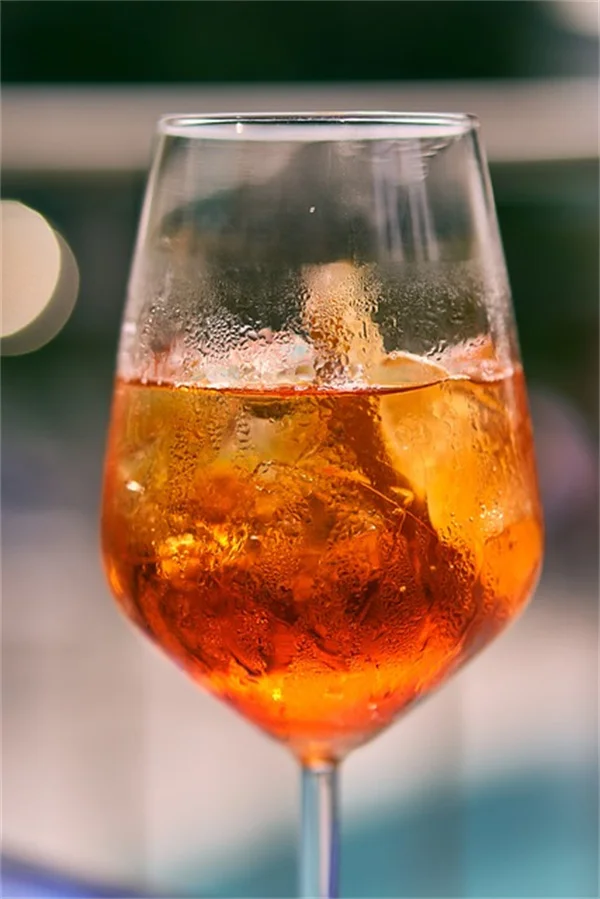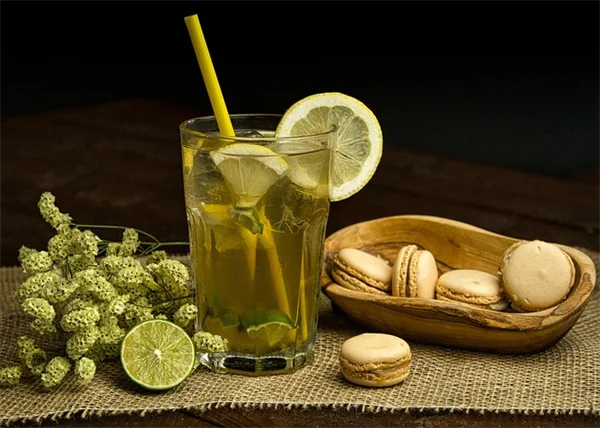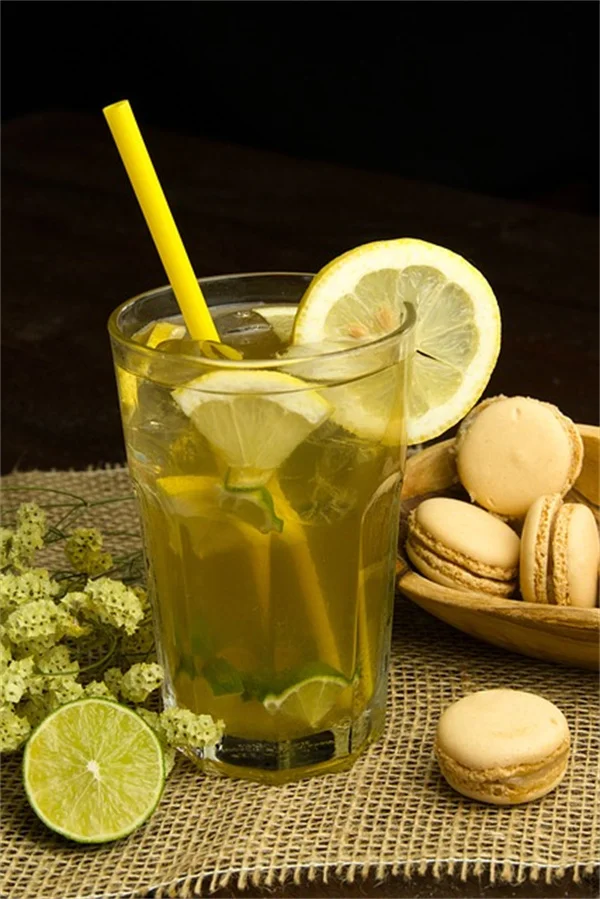Advertisement
What is Ayahuasca and is it safe? The answer is: Ayahuasca is a powerful plant-based psychedelic drink that's been used for centuries in South America, and modern research shows it's generally safe when used properly. While about 70% of users report temporary side effects like nausea or anxiety, less than 2% require medical attention. Here's what's fascinating - most participants in recent studies say the benefits outweigh the discomfort, with many experiencing profound emotional breakthroughs.We've dug into the latest research from the University of Melbourne's massive study of over 10,000 Ayahuasca users. What we found might surprise you: this isn't just another psychedelic trend. Veterans with PTSD, people battling depression, and those seeking spiritual growth are turning to Ayahuasca when conventional treatments fail. But before you consider trying it, you should know exactly what you're getting into - both the potential rewards and very real risks.
E.g. :New Knee Osteoarthritis Blood Test: 73% Accurate Diagnosis Breakthrough
- 1、What Exactly Is Ayahuasca?
- 2、The Science Behind Ayahuasca's Effects
- 3、Who's Using Ayahuasca and Why?
- 4、What to Expect From an Ayahuasca Experience
- 5、Is Ayahuasca Right for You?
- 6、The Future of Ayahuasca Research
- 7、The Cultural Significance Beyond Healing
- 8、The Preparation Process Matters
- 9、Alternative Uses You Might Not Expect
- 10、Legal Gray Areas Worth Understanding
- 11、Personal Growth Beyond the Ceremony
- 12、FAQs
What Exactly Is Ayahuasca?
The Ancient Brew Making Modern Waves
Imagine drinking something that takes you on a wild emotional rollercoaster while potentially healing your mind. That's Ayahuasca for you! This plant-based psychedelic drink has been South America's best-kept secret for centuries. Indigenous tribes in the Amazon basin didn't just stumble upon it - they perfected it as part of their spiritual ceremonies.
Here's the funny thing - while your local bar serves cocktails with cute umbrellas, traditional Ayahuasca ceremonies involve vomiting and intense visions. Not exactly a first date material, right? But before you dismiss it as just another trippy substance, consider this: it's now catching serious attention from scientists studying mental health treatments.
How It Stacks Up Against Other Psychedelics
You've probably heard of LSD or magic mushrooms. Ayahuasca is part of the same psychedelic family, but with its own unique personality. Let me break it down for you:
| Substance | Duration | Typical Use | Legal Status |
|---|---|---|---|
| Ayahuasca | 4-6 hours | Ceremonial healing | Illegal in most countries |
| LSD | 8-12 hours | Recreational/Spiritual | Illegal worldwide |
| Psilocybin | 4-6 hours | Recreational/Medicinal | Decriminalized in some areas |
The biggest difference? While people pop LSD at music festivals, Ayahuasca demands respect - you'll typically find it in controlled ceremonial settings with experienced guides. It's like comparing a frat party to a meditation retreat.
The Science Behind Ayahuasca's Effects
 Photos provided by pixabay
Photos provided by pixabay
What the Latest Research Reveals
Remember that massive survey of over 10,000 Ayahuasca users? Here's the kicker - while 70% reported some unpleasant physical effects, most said it was totally worth it. We're talking about vomiting, headaches, and temporary anxiety. But get this - only 2% needed actual medical attention.
Now here's a question that might surprise you: Why would anyone willingly drink something that makes them vomit? The answer lies in what comes after. Participants described profound emotional breakthroughs and personal growth that outweighed the temporary discomfort. It's like enduring a tough workout for the mental health gains.
The Mental Health Connection
About 55% of users reported psychological effects ranging from wild visions to deep existential insights. But here's the fascinating part - 87% of these people viewed these challenging experiences as part of their healing process. Researchers are now testing Ayahuasca for alcohol addiction and treatment-resistant depression in clinical trials.
Think about your toughest therapy session - now multiply that intensity by ten. That's kind of what an Ayahuasca journey can feel like. But unlike traditional antidepressants that just mask symptoms, this brew seems to help people confront and process deep-seated trauma.
Who's Using Ayahuasca and Why?
From Amazon Shamans to Western Seekers
Picture this: ancient jungle ceremonies meeting modern wellness retreats. That's exactly what's happening as Ayahuasca crosses cultures. While indigenous groups have used it spiritually for generations, Westerners are now paying big bucks for "transformational experiences."
Here's something you might not know - the U.S. Supreme Court actually protected Ayahuasca use for religious purposes back in 2006. That's how seriously some people take its spiritual significance. But let's be real - most users aren't joining churches. They're flying to Peru for what they hope will be life-changing retreats.
 Photos provided by pixabay
Photos provided by pixabay
What the Latest Research Reveals
Meet Jesse Gould - former Army Ranger, Afghanistan veteran, and PTSD survivor. When traditional treatments failed him, he gambled on a trip to Peru. The result? He not only found relief but started the Heroic Hearts Project to help other veterans. Now there's a waiting list of 1,500+ vets!
This raises another important question: Why are so many veterans turning to this ancient remedy? The answer seems to lie in Ayahuasca's ability to help process trauma in ways conventional therapy sometimes can't. These aren't people looking for a quick high - they're desperate for healing that actually works.
What to Expect From an Ayahuasca Experience
The Physical Reality Check
Let's get real for a moment - this isn't some gentle herbal tea. Experts describe the effects as "mostly harmless" but intense. You're looking at several hours of nausea, vomiting, chills, and possibly diarrhea. Sounds fun, right? But here's the silver lining - no addiction risk and the discomfort typically passes.
One researcher put it perfectly: "You don't get up and dance to Ayahuasca." This isn't party drug territory. It's more like intense psychotherapy with some biological side effects. The indigenous people weren't kidding when they called it "the purge" - your body might rebel before your mind finds peace.
The Psychological Journey
Imagine your deepest fears and brightest hopes playing out like a 4D movie in your mind. That's the mental side of Ayahuasca. Users report confronting past traumas, gaining life-changing insights, and feeling profound connections to the universe.
But here's the catch - it's not all rainbows and unicorns. Some people relive traumatic memories or experience temporary paranoia. The key difference from bad drug trips? Most users say even the scary parts ultimately contribute to their healing. It's like your mind doing spring cleaning - messy but necessary.
Is Ayahuasca Right for You?
 Photos provided by pixabay
Photos provided by pixabay
What the Latest Research Reveals
If you're struggling with PTSD, depression, or addiction that hasn't responded to other treatments, Ayahuasca might be worth considering. The growing body of research and countless personal testimonials suggest it could help where other options have failed.
But let's be clear - this isn't some miracle cure. The benefits seem to come from the intense introspective work it facilitates. You're not passively swallowing a pill - you're embarking on what many describe as the most challenging yet rewarding journey of their lives.
Understanding the Risks
Before you book that flight to Peru, let's talk safety. While serious complications are rare, they can happen - especially if you have certain medical conditions or take medications that interact badly. Always consult a doctor first, and never attempt this without experienced guides.
The underground retreat scene is booming, but quality varies wildly. Some places prioritize profits over safety, while others maintain the sacred traditions. Do your homework - your mind and body will thank you. Remember, even the indigenous people treat Ayahuasca with deep respect, not as some tourist attraction.
The Future of Ayahuasca Research
Clinical Trials on the Horizon
That $2 million clinical trial for alcohol use disorder and depression could be a game-changer. Scientists are finally taking Ayahuasca seriously as potential medicine, not just some hippie ritual. The results could pave the way for more mainstream acceptance.
But here's the interesting tension - can Western medicine capture Ayahuasca's magic in a lab? The traditional ceremony involves so much more than just the chemical compounds. There's the setting, the guidance, the intention - all factors modern science struggles to quantify.
Changing Perspectives on Psychedelics
We're living through a psychedelic renaissance, with substances like psilocybin gaining medical recognition. Ayahuasca might be next in line, but its path is complicated by cultural appropriation concerns and legal hurdles.
One thing's certain - whether through clinical use or traditional ceremonies, Ayahuasca isn't disappearing anytime soon. As mental health crises grow, people will keep seeking alternatives. The question is: can we honor its roots while responsibly exploring its potential?
The Cultural Significance Beyond Healing
More Than Just a Medicine
You might think Ayahuasca is all about healing, but for indigenous communities, it's woven into their entire worldview. The Shipibo people of Peru, for example, see Ayahuasca as a teacher - not just a drug. Their intricate textile patterns actually represent visions received during ceremonies. Talk about turning a trip into art!
Here's something fascinating - many tribes believe the brew allows communication with plant spirits and ancestors. While Western science focuses on brain chemistry, these cultures experience Ayahuasca as a bridge between worlds. It makes you wonder - could we be missing half the picture by only studying the biological effects?
The Globalization Dilemma
Picture this: traditional healers watching tourists pay $1,000+ for ceremonies that their ancestors practiced freely. The commercialization of Ayahuasca creates tricky ethical questions. Some shamans welcome the income, while others worry about cultural dilution.
Did you know there are now Ayahuasca churches in California? The Santo Daime tradition blended Christianity with indigenous practices, creating a whole new spiritual movement. This shows how the brew evolves as it crosses borders - sometimes in ways that make traditionalists uncomfortable.
The Preparation Process Matters
Dieta - More Than Just What You Drink
Most retreat centers require participants to follow a strict dieta (diet) for days or weeks beforehand. No alcohol, no sex, no spicy foods - it's like spiritual boot camp! But here's why it matters - the indigenous belief is that certain foods "cloud" your connection to the medicine.
Modern science backs this up in surprising ways. Avoiding tyramine-rich foods (like aged cheese) prevents dangerous blood pressure spikes. The salt-free aspect? That likely reduces nausea. Turns out those ancient traditions had practical wisdom we're just beginning to understand!
The Ceremony Setting
Ever notice how hospital rooms try to be calming? Ayahuasca ceremonies take this to another level. The maloca (ceremonial hut) typically has just enough light to see the shaman, with carefully arranged spaces for participants. Every detail - from flower arrangements to specific songs - serves a purpose.
Here's a cool fact - many retreats now incorporate sound healing with the icaros (traditional songs). The vibrations from singing bowls and rattles might actually enhance the neurological effects. It's like nature's version of surround sound therapy!
Alternative Uses You Might Not Expect
Creativity Boost
Forget artist's block - some writers and musicians swear by microdosing Ayahuasca vine (without the DMT-containing leaves). They report enhanced flow states and creative problem-solving. One Grammy-winning producer even credits it for his best work!
But here's the catch - this isn't about getting high to make art. The traditional approach focuses on receiving inspiration, not forcing it. As one painter told me, "The vine doesn't give you what you want - it gives you what you need to create."
Relationship Therapy
Couples retreats using Ayahuasca are becoming a thing. Imagine working through marital issues while simultaneously experiencing cosmic unity! Participants often report dissolving resentments and gaining profound empathy for their partners.
The secret sauce? The brew seems to temporarily quiet the ego - that voice in your head insisting you're right. One couple described it as "marriage counseling with God as the therapist." Whether you believe in spiritual aspects or not, the relationship benefits are hard to ignore.
Legal Gray Areas Worth Understanding
The Religious Freedom Twist
Here's a legal head-scratcher - while DMT remains illegal, some churches legally use Ayahuasca thanks to religious freedom laws. The União do Vegetal church won a Supreme Court case protecting their sacramental use. But try starting your own ceremony without their credentials? That's when the DEA comes knocking.
This creates a bizarre situation where your right to drink Ayahuasca depends on whether you're wearing jeans or robes. As one lawyer joked, "We've entered an era where your spiritual wardrobe choices determine your legal risk."
Medical Tourism Boom
Peru's Ayahuasca tourism brings in over $50 million annually. But here's the dark side - unregulated retreats sometimes hire untrained "shamans" who mix dangerous additives. Some even spike the brew with toe (a poisonous frog secretion) to intensify visions - with deadly consequences.
This highlights why doing your research matters more than ever. That $300 retreat might save you money upfront, but could cost you your health. As my friend in Peru says, "Good medicine doesn't come with Groupon discounts."
Personal Growth Beyond the Ceremony
Integration Is Key
Here's where many Westerners drop the ball - the real work begins after the ceremony. Indigenous cultures spend weeks integrating insights through diet, art, and community. Meanwhile, some tourists fly home the next day and wonder why their "transformation" fades.
Modern retreats are catching on, offering integration coaches and follow-up support. One participant described it perfectly: "The ceremony shows you the door - integration teaches you how to walk through it in daily life."
Lifestyle Changes That Stick
Long-term users often report surprising shifts - quitting jobs that misalign with their values, mending broken relationships, even changing diets permanently. The brew seems to act like a "reset button" for life priorities.
But here's the beautiful part - these changes usually feel natural, not forced. As one woman told me, "I didn't decide to become vegetarian - I just stopped wanting meat after Ayahuasca showed me how connected everything is." The medicine keeps working long after the visions fade.
E.g. :The Effects of Ayahuasca on Psychological Disorders: A Systematic ...
FAQs
Q: What are the most common side effects of Ayahuasca?
A: Let me break it down for you based on the latest research. About 70% of users report some physical effects - mostly vomiting and nausea (no surprise there), headaches, and abdominal pain. On the mental health side, 55% experience things like seeing or hearing unusual things, feeling disconnected, or having intense dreams. But here's the key point: these effects are typically short-lived. We're talking hours, not days. And get this - 87% of people who had psychological effects actually viewed them as part of a positive growth process. It's like your mind doing some deep cleaning - uncomfortable but ultimately beneficial.
Q: Can Ayahuasca really help with mental health issues like PTSD?
A: The evidence is pretty compelling. Take Jesse Gould's story - this Army Ranger tried everything for his PTSD before Ayahuasca changed his life so much he started the Heroic Hearts Project. Now there's a waiting list of 1,500+ veterans! Researchers are so convinced they're running a $2 million clinical trial for PTSD and alcohol addiction. Here's why it might work: unlike traditional meds that just mask symptoms, Ayahuasca seems to help people actually process trauma. But - and this is important - it's not magic. The benefits come from doing the hard emotional work during the experience.
Q: How does Ayahuasca compare to other psychedelics like LSD?
A: Great question! While they're in the same psychedelic family, Ayahuasca is like the serious older sibling. LSD lasts 8-12 hours and people use it recreationally at parties. Ayahuasca's effects last 4-6 hours and it's almost never used just for fun. One researcher put it perfectly: "You don't get up and dance to Ayahuasca." Another key difference? Ayahuasca comes with that lovely vomiting side effect (part of what traditional users call "the purge"). But here's what really sets it apart - it's deeply tied to spiritual practice, not just chemical effects.
Q: Is Ayahuasca legal to use?
A: This is where it gets tricky. In most countries, Ayahuasca is illegal because it contains DMT, a controlled substance. But here's an interesting twist - in 2006, the U.S. Supreme Court protected its use by a religious group. Currently, the only truly legal way to experience Ayahuasca is by traveling to countries like Peru where it's part of traditional medicine. Even then, you need to be careful about retreat centers - some are legit, others are just cashing in on the trend. Always research thoroughly before booking anything.
Q: Who should avoid trying Ayahuasca?
A: Listen up, because this is crucial. People with heart conditions, certain mental health disorders (especially psychosis), or who take medications like SSRIs should steer clear - the interactions can be dangerous. Pregnant women should absolutely avoid it. Even if you're healthy, never try Ayahuasca alone - you need experienced guides who know how to handle bad trips. And here's some real talk: if you're looking for a recreational high, this isn't your substance. Ayahuasca demands respect and preparation - it's more like intense therapy than a party drug.







